Across the Chao Phraya River from Chinatown are old neighbourhoods steeped in history. Over a hundred years ago, one of them was the home and playground of a goldsmith's daughter who decades later become the mother of two beloved monarchs. But the late Princess Srinagarindra was not the only historical figure who once called this area home.
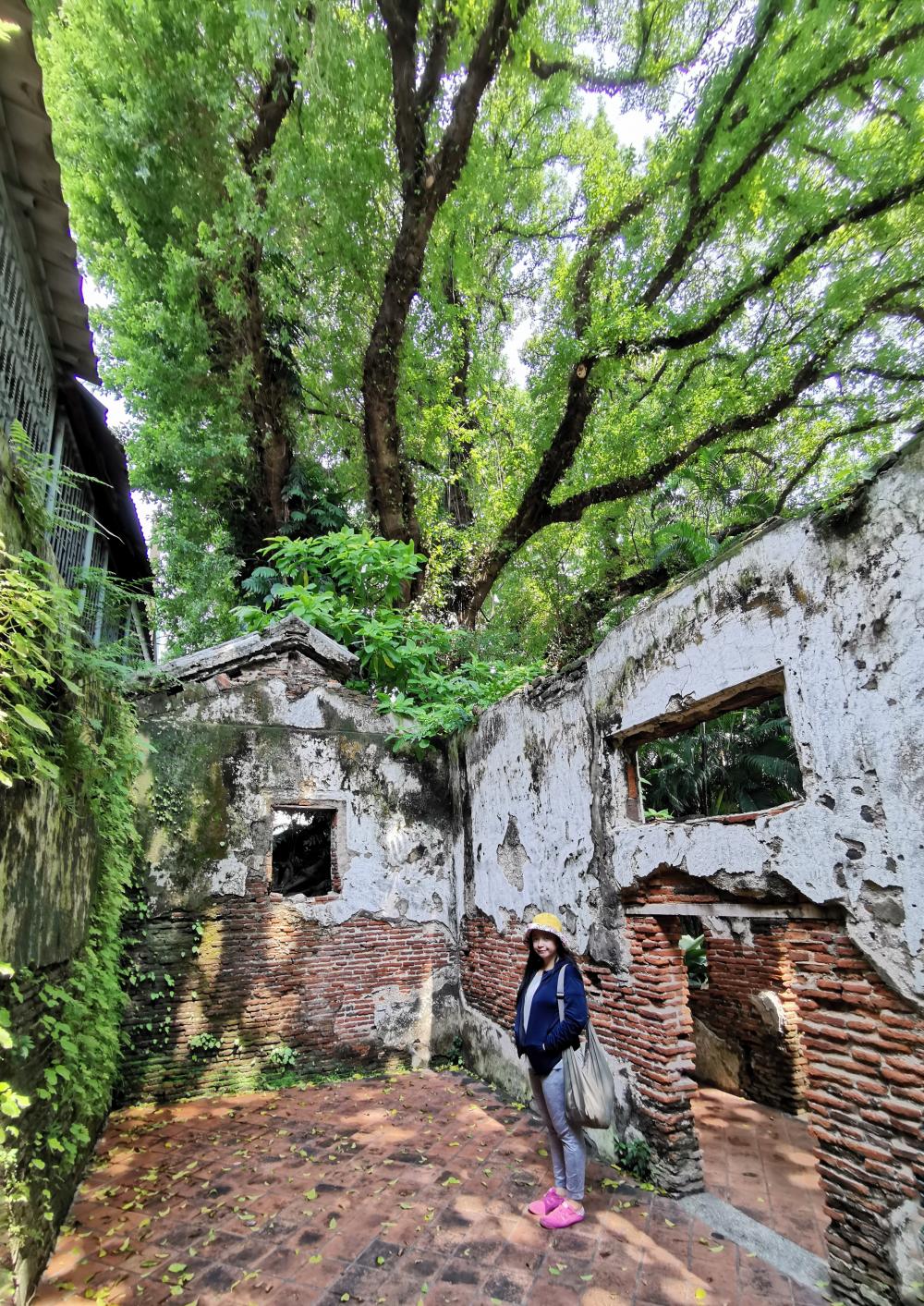
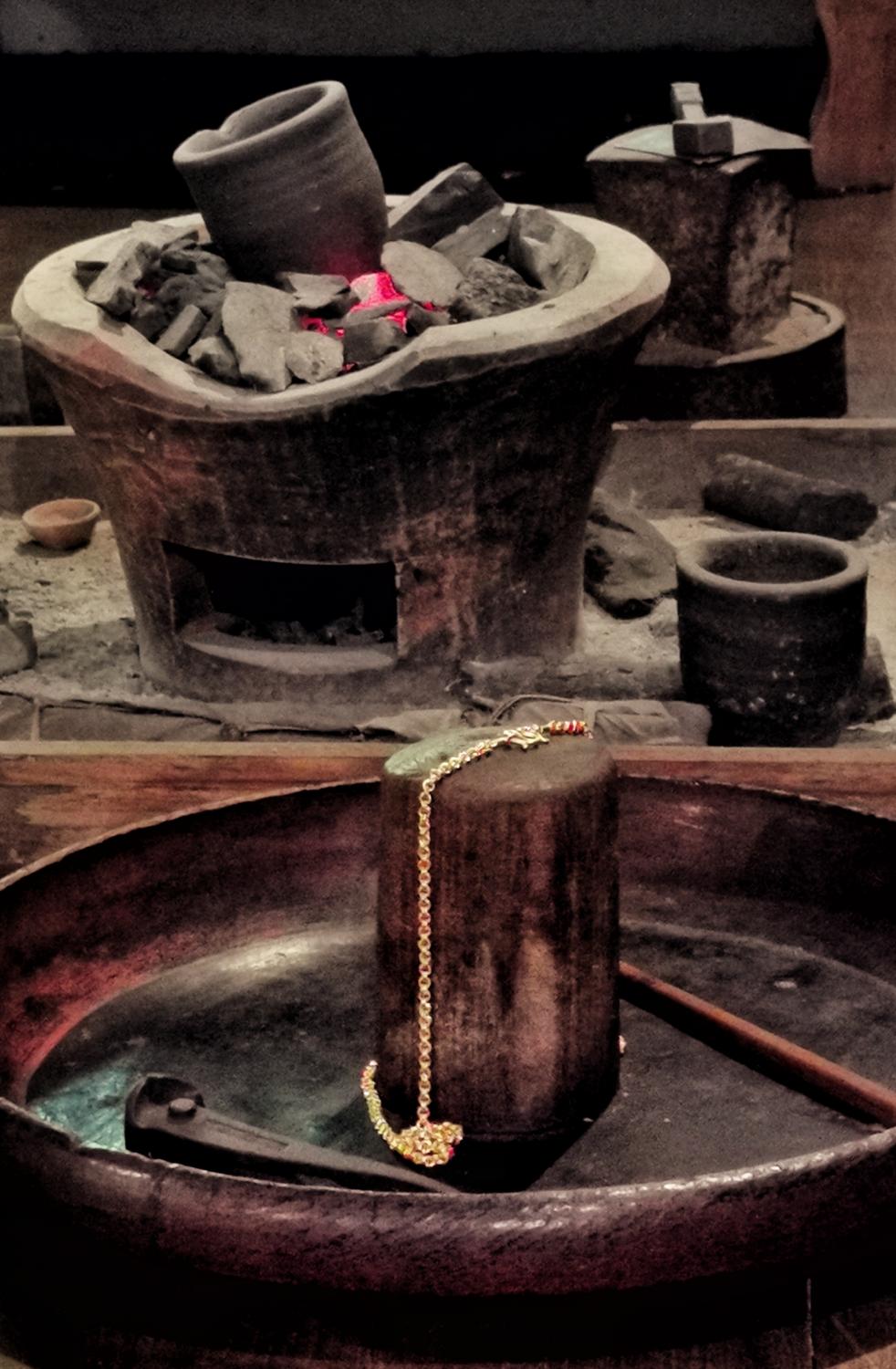
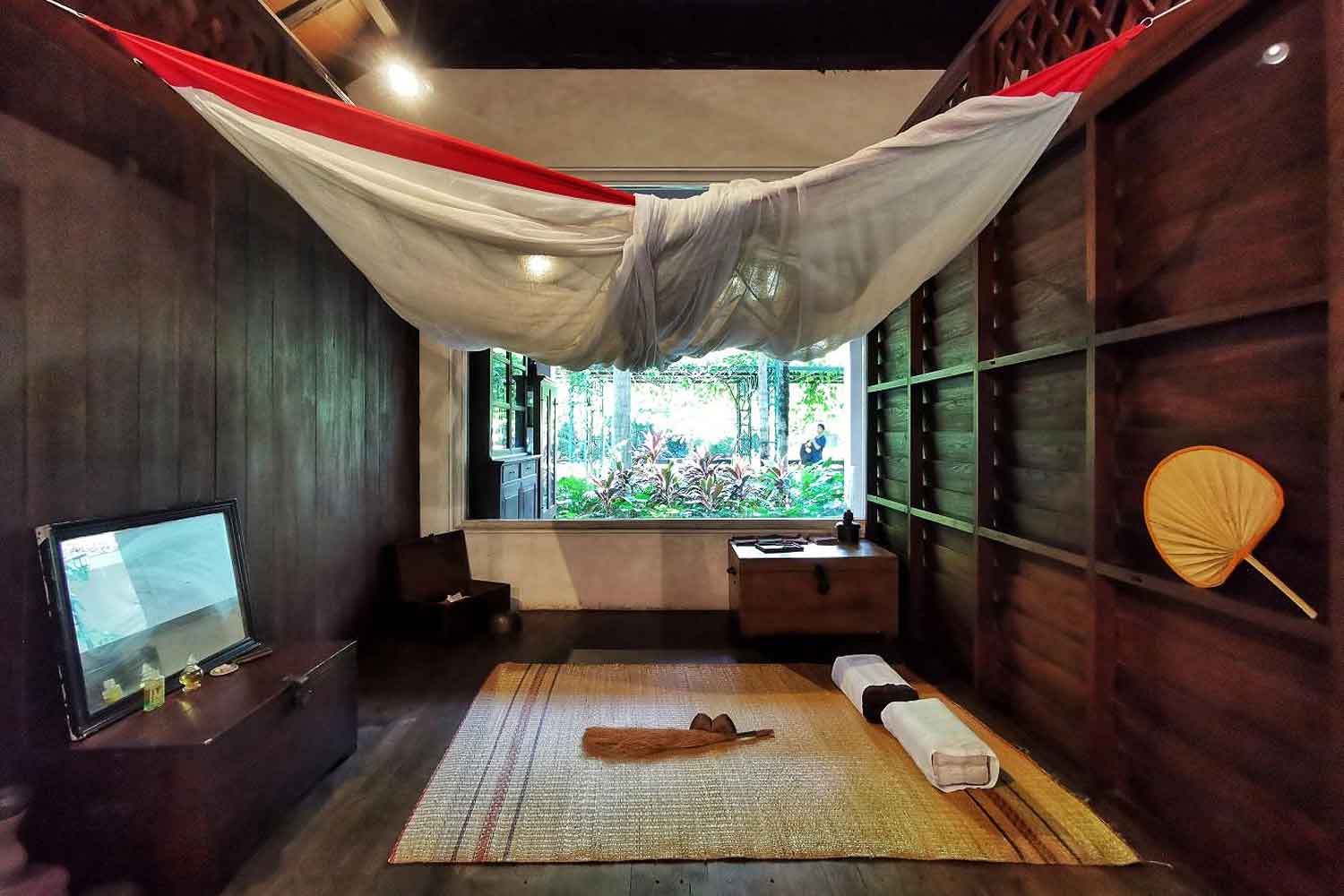

An oasis of greenery and serenity, the Princess Mother Memorial Park is located in an old neighbourhood between Wat Anong and the Chao Phraya River. Apart from large shade trees and many native plants, the 4 rai site, which was donated by the late businessman/politician Lek Nana, also has a replica of the modest childhood home of Princess Srinagarindra, a museum dedicated to the princess' life and work and the history of this part of Klong San, and ruins of workers' accommodation that date back to the early Rattanakosin Period. Throughout the months of November and December, every Sunday from 4pm on, veteran singers such as Srisalai Suchatwut, Ruangthong Thonglanthom, Rungruedi Phaengphongsai and Jittima Juajai will take turns to entertain parkgoers with their hits.
Not so far from the Princess Mother Memorial Park, which is dedicated to Princess Srinagarindra, sits Wat Anongkharam where she used to study. The temple was built during the reign of King Rama III by Thanphuying Noi, wife of then-Phraya Si Phiphat Ratchakosa (Tat Bunnag) who ordered a major renovation of another temple nearby now known as Wat Pichaiyat, or officially Wat Pichaya Yatikaram.
During the following reign, Phraya Si Phiphat Ratchakosa was promoted to become Somdet Chao Phraya Borom Maha Pichaiyat, overseeing the capital as well as overseas trade. He was one of the only four persons in history to attain the Somdet Chao Phraya rank. This explains why the road that cuts through these areas, as well as the canal running side by side with it bear the name Somdet Chao Phraya. The Chao Phraya River, however, has nothing to do with this. The name has been used since the Ayutthaya Period.
Back to Princess Mother Memorial Park, the area next to it used to house a community of Muslims from Pattani and India, among them were the forefather of the Nana family, which donated the land for the park. Near the park's entrance there is a big arched gate bearing the initials RBMCO, which stands for Randery Braramakran Company. It's the real estate business of the Nana family, which was established in 1913. Some of those Muslim immigrants were craftsmen who work with gold hence the lane they lived in is called Soi Chang Nak (goldsmith lane).
But, of course, this part of Klong San also was home to Thai and Chinese people. Apart from the mentioned temples, there are still a few more, each with interesting history and architectural art. Among them are Wat Thong Nopphakhun and Wat Thong Thammachat.
In the past, the communities were linked by small criss-crossing waterways, which is why the area is called Klong San, which means woven canals. These days, they are connected by small roads and alleyways that make it convenient to explore on foot.
Many residents are newcomers but there are also those who never left. During one of my visits, I met an old man who told me about the people's reaction during the Manhattan Rebellion in 1951 against Field Marshal Plaek Pibunsongkhram who was the prime minister at that time. He recalled that he was very young and the sounds of gunfights from the Memorial Bridge were loud and frightening. On the latest trip to the area, a man who was collecting fallen tree branches told me about a beautiful Chinese mansion nearby. I followed the directions he provided, found the place but only took pictures of its intricately embellished gable from outside.
Like other old parts of Bangkok, the more I visit this side of Klong San, the more I learn about the Thai society and history. The area is safe and easy to get to. Who knows, you might find it one of your favourite places too.
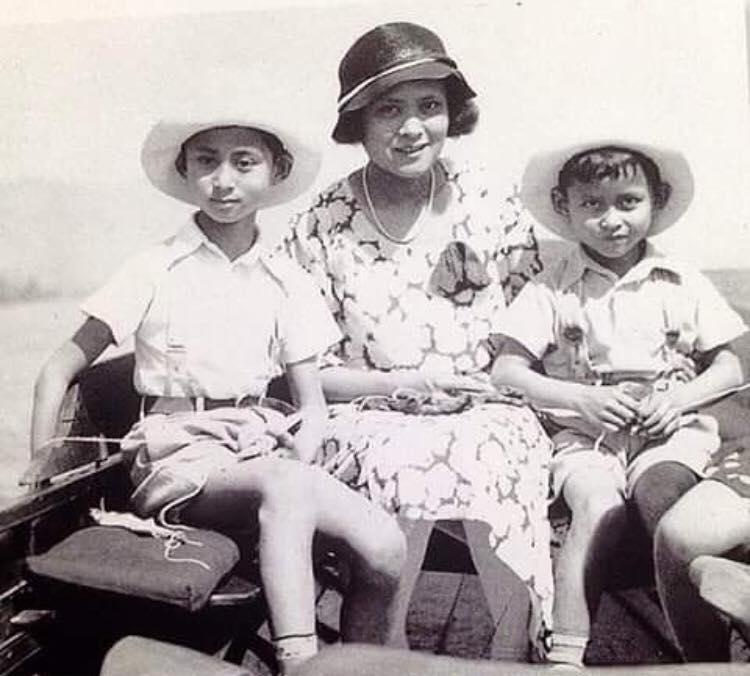
Born a commoner on Oct 21, 1900, as Sangwan, the late HRH Princess Srinagarindra, respectfully known as Somdet Ya, or 'The Royal Grandmother', spent the early years of her life with her parents in a rented wooden shophouse near Wat Anong. In 1919, she married Prince Mahidol Adulyadej, a son of King Chulalongkorn (Rama V). The couple had three children. Her royal husband passed away only 10 years after the marriage. Their two sons later ascended to the throne. In this photograph, Somdet Ya is flanked by the young princes who later became King Ananda Mahidol (Rama VIII) and King Bhumibol Adulyadej (Rama IX). Photo courtesy of the Royal Household Bureau
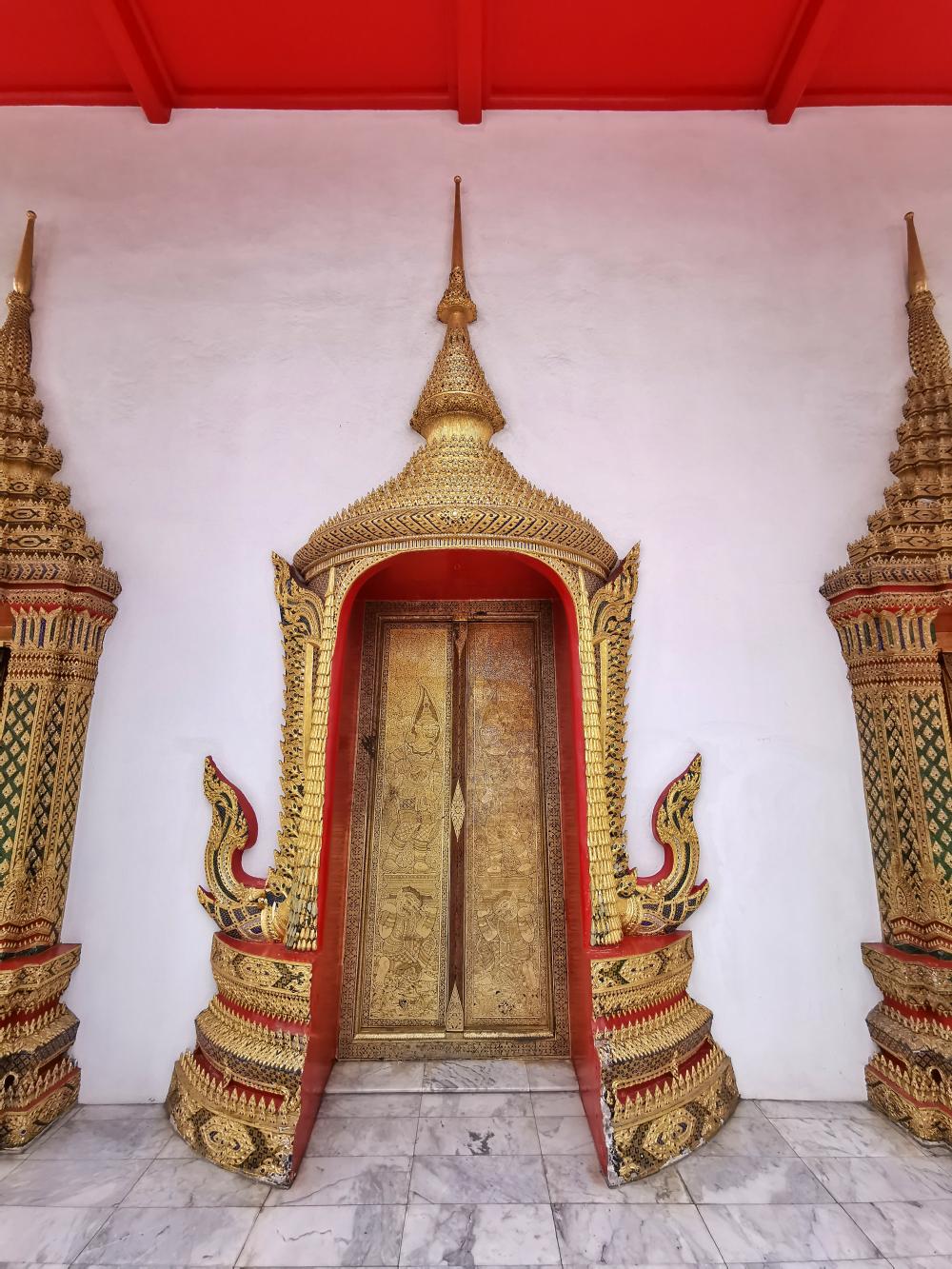
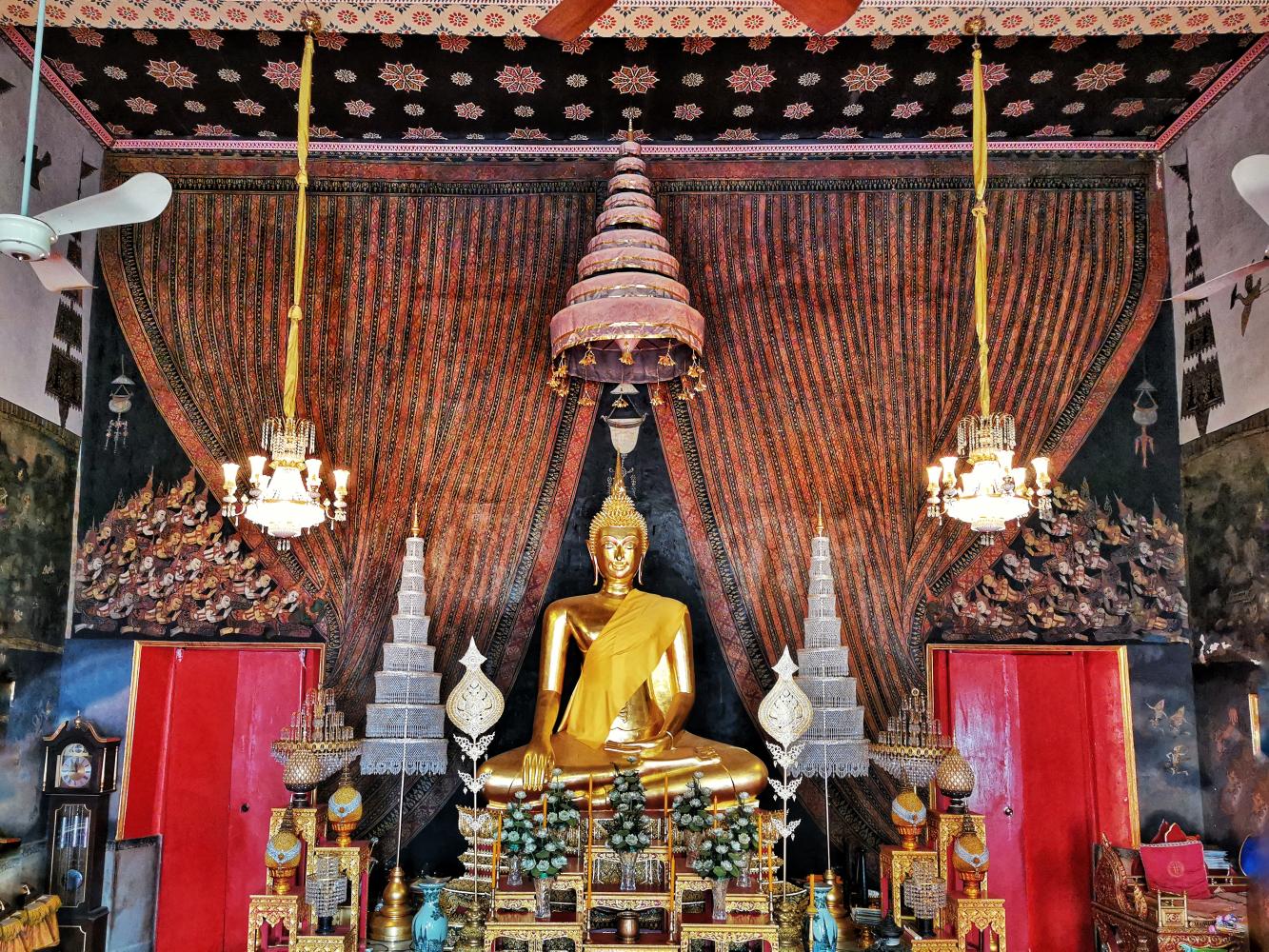
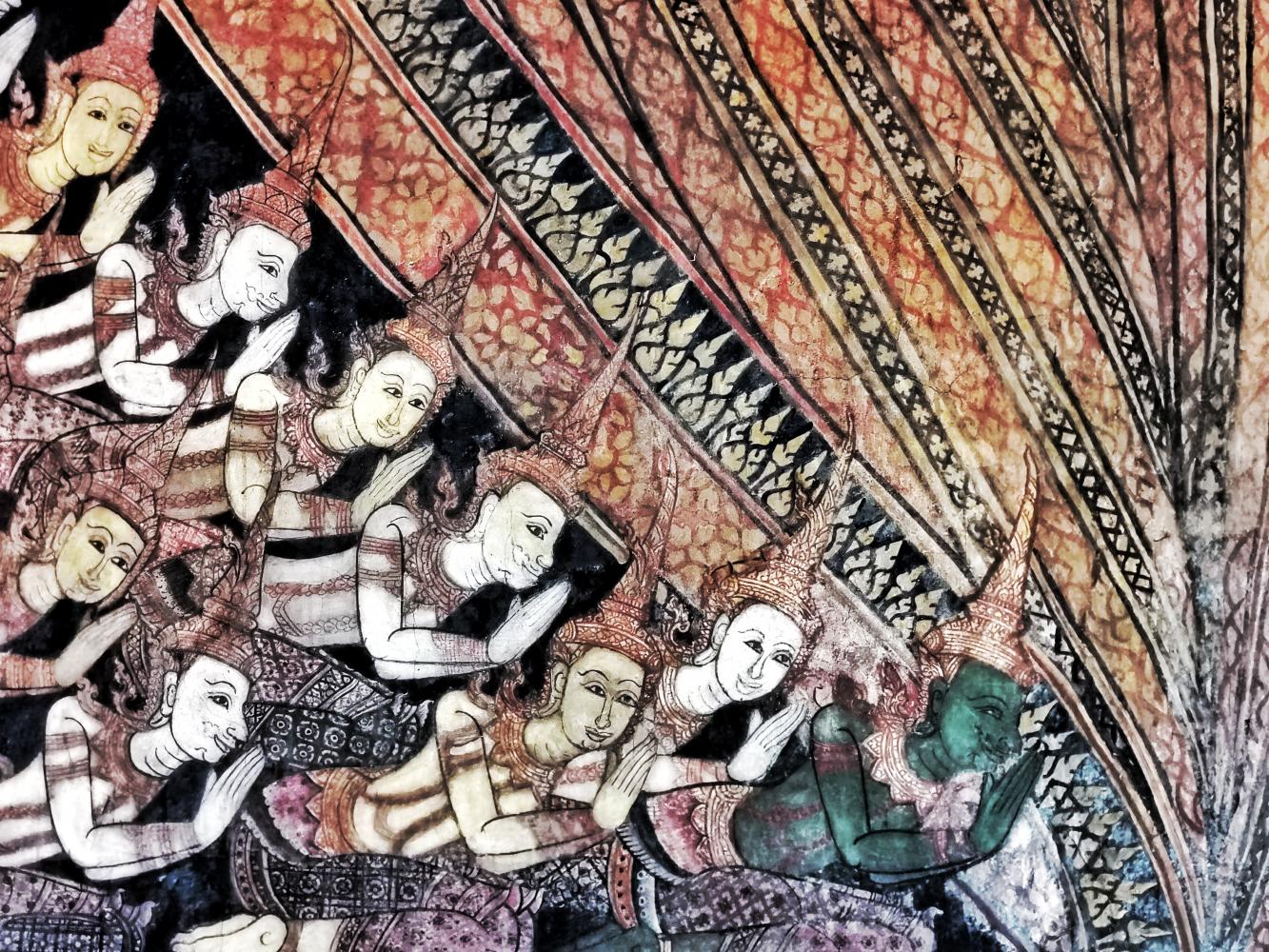
This section of Klong San district boasts a number of elegant temples. Wat Thong Nopphakhun stands out from the others, thanks to its ordination hall, which features not only doors and windows with unique designs but also one-of-a-kind murals in its interior. The wall behind the principal Buddha image, for example, sports a picture unconventional for a Thai temple. There is a set of beautiful, partially open, curtains painted on it. At first glance, some visitors don't even realise that's not real cloth. The hall is normally closed, except during the morning and evening prayer sessions (tham wat chao and tham wat yen). Tomorrow, it will be open most of the day as the temple will be celebrating the royal kathin ceremony.
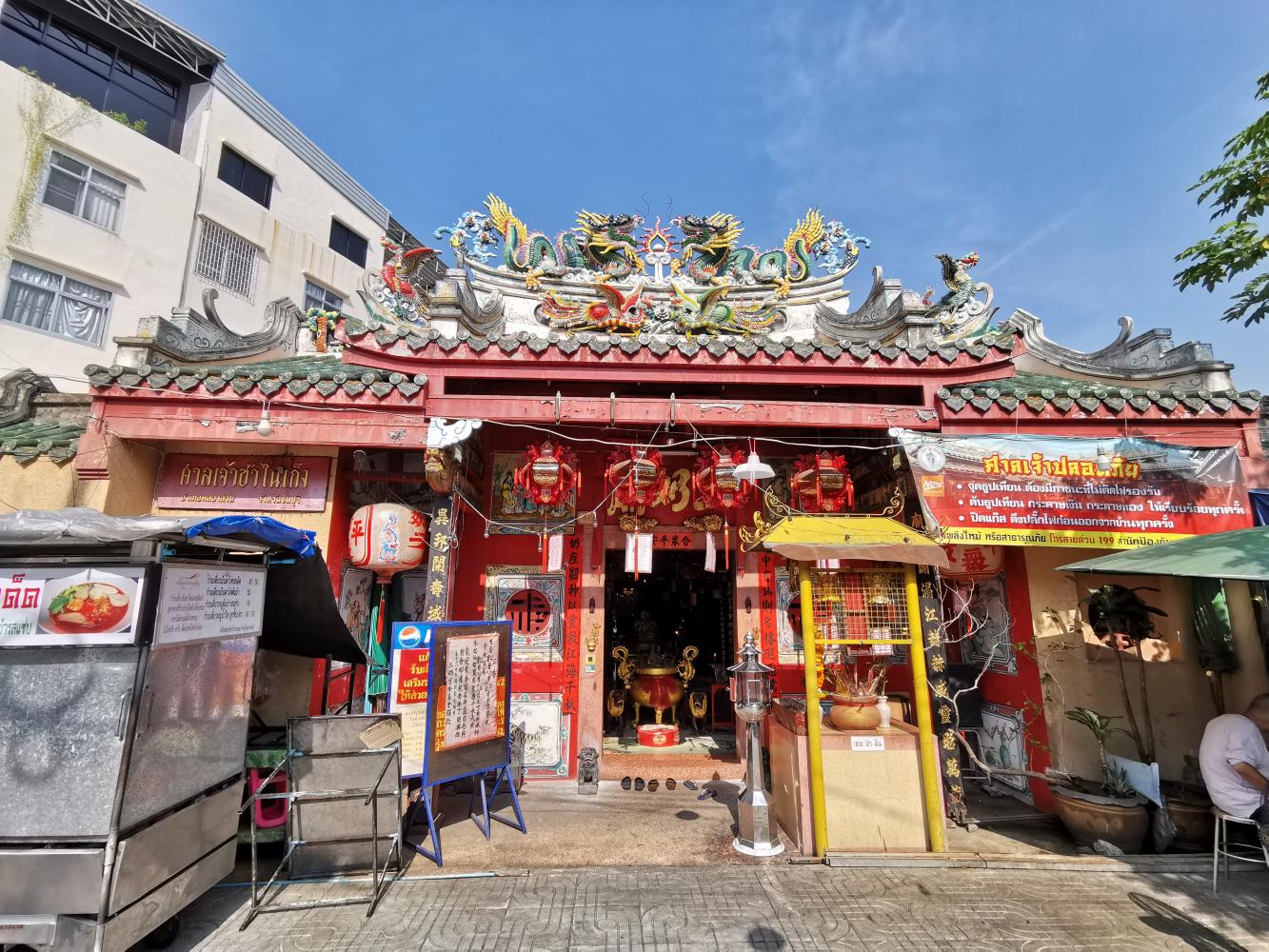
In the area between Wat Anong to the west and Wat Thong Nopphakhun to the east, there are Chinese shrines of various sizes, some so small and hidden you might walk pass without even noticing. This Sam Nai Keng Shrine is located right on Tha Din Daeng road. It dates back to 1847.

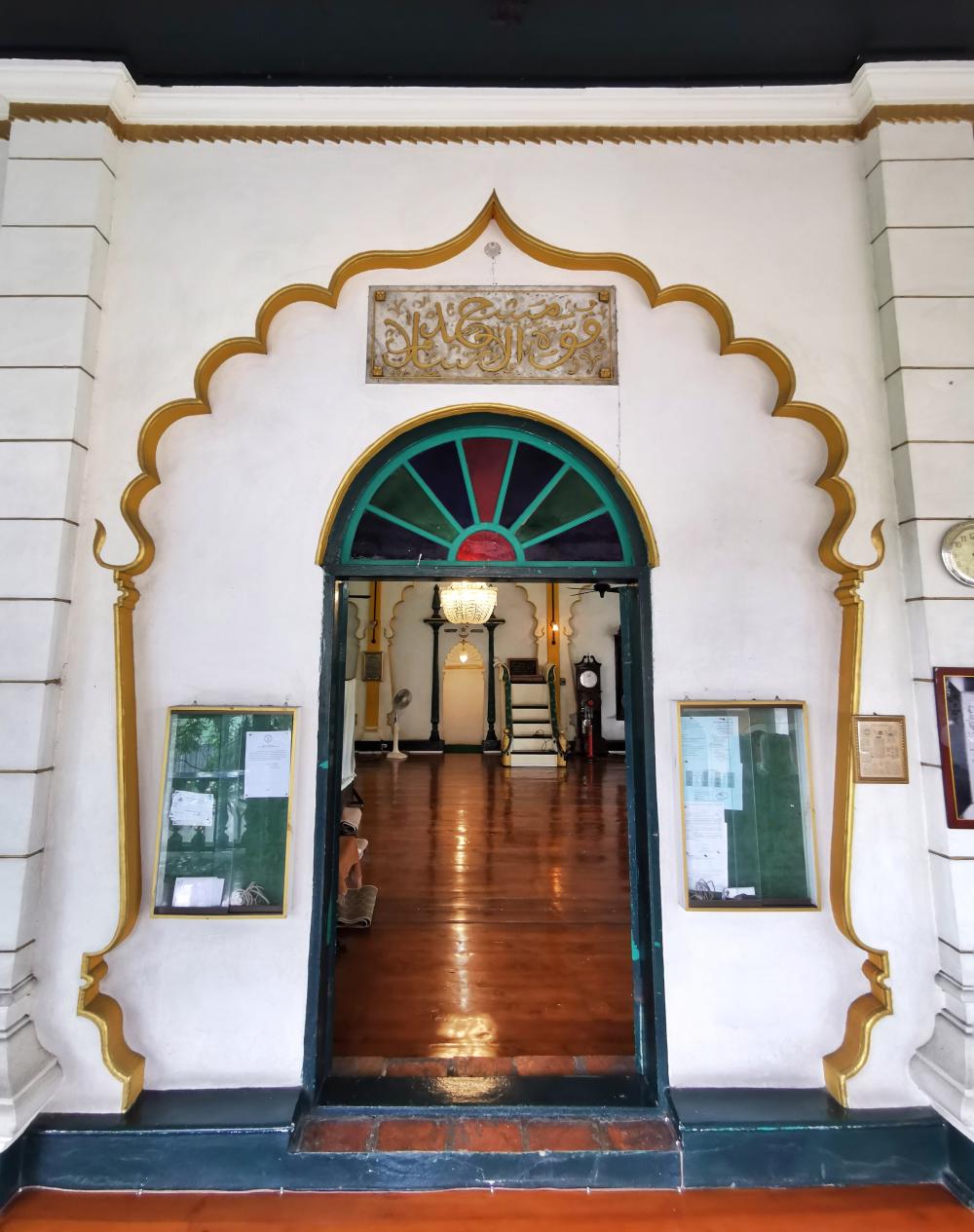
This part of Klong San has two mosques, Goowatin and Saifee. The one shown here is the first, which is a Sunni mosque. The other, which is within walking distance, belongs to Shia Muslims. Goowatin welcomes respectful visitors no matter what religion, while the other, I was told, is not so open. Goowatin was built in 1859 under the order of Somdet Chao Phraya Borom Maha Pichaiyat (Tat Bunnag), one of Siam's top government official during the reign of King Rama IV. He was a Buddhist with Muslim ancestors. With the mosque, Muslim immigrants who settled down in the area no longer had to travel far to perform religious rites. Next to the riverside mosque is the house of early members of the Nana family, which donated part of their land for the establishment of the Princess Mother Memorial Park.
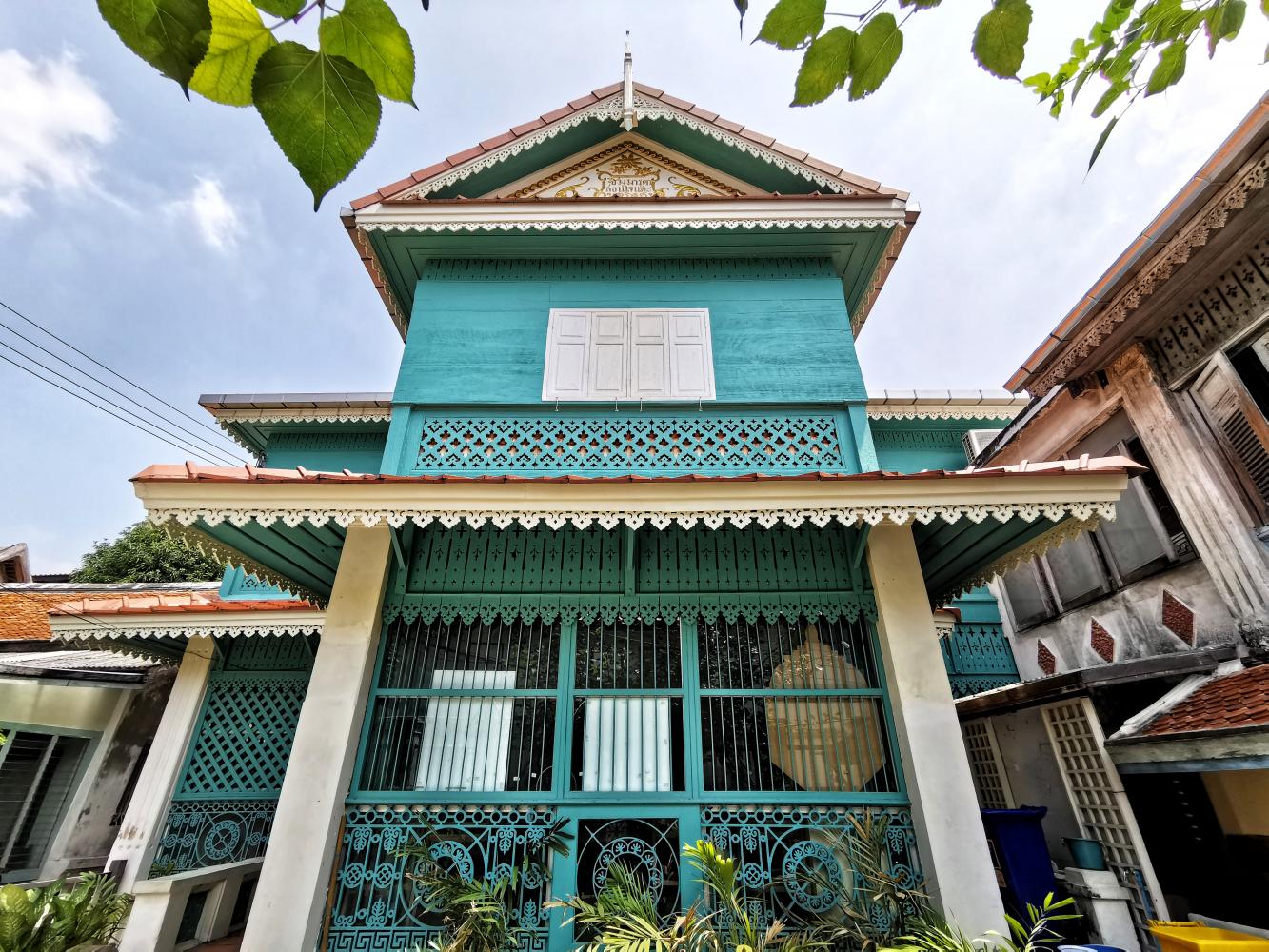

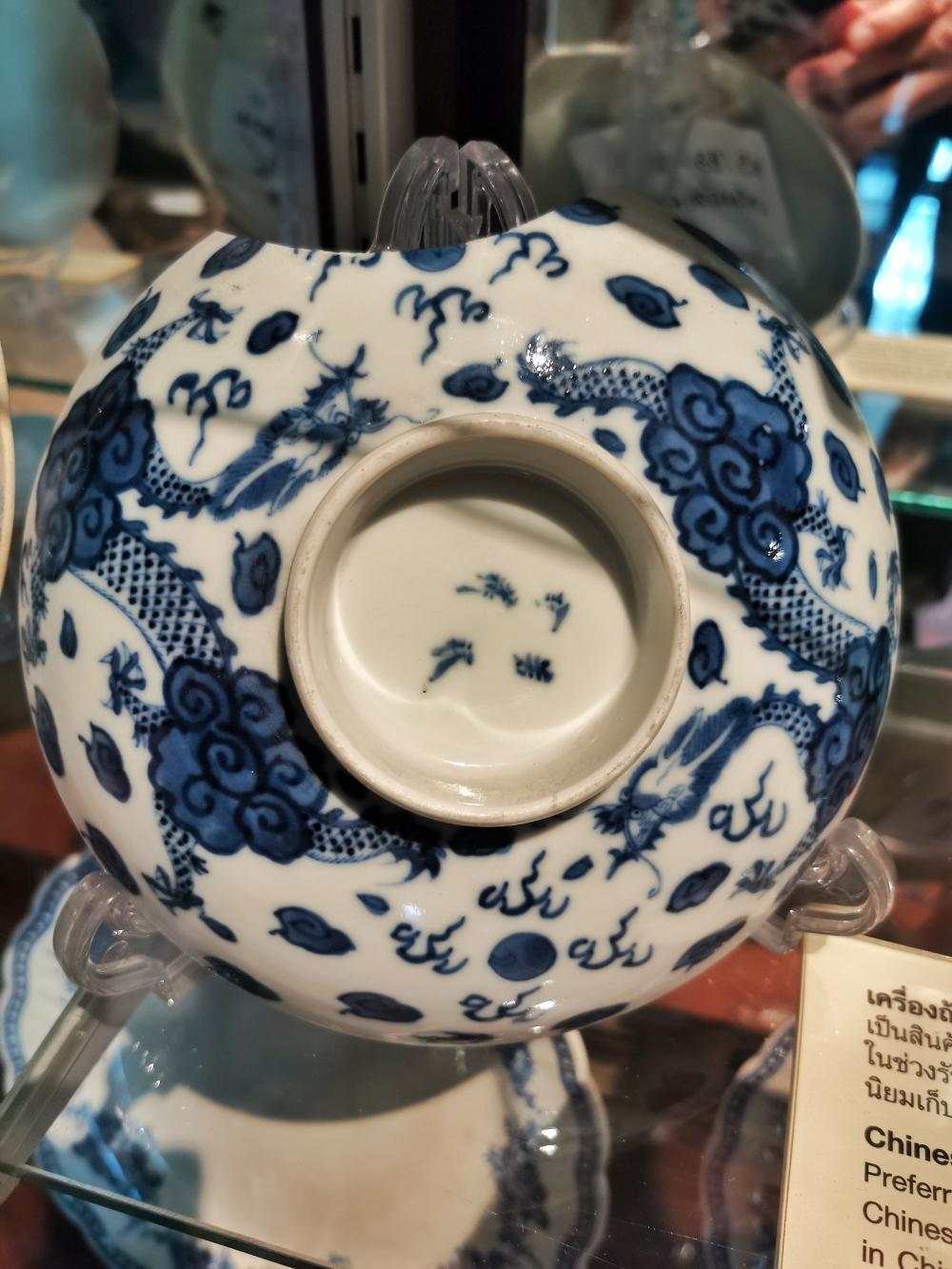
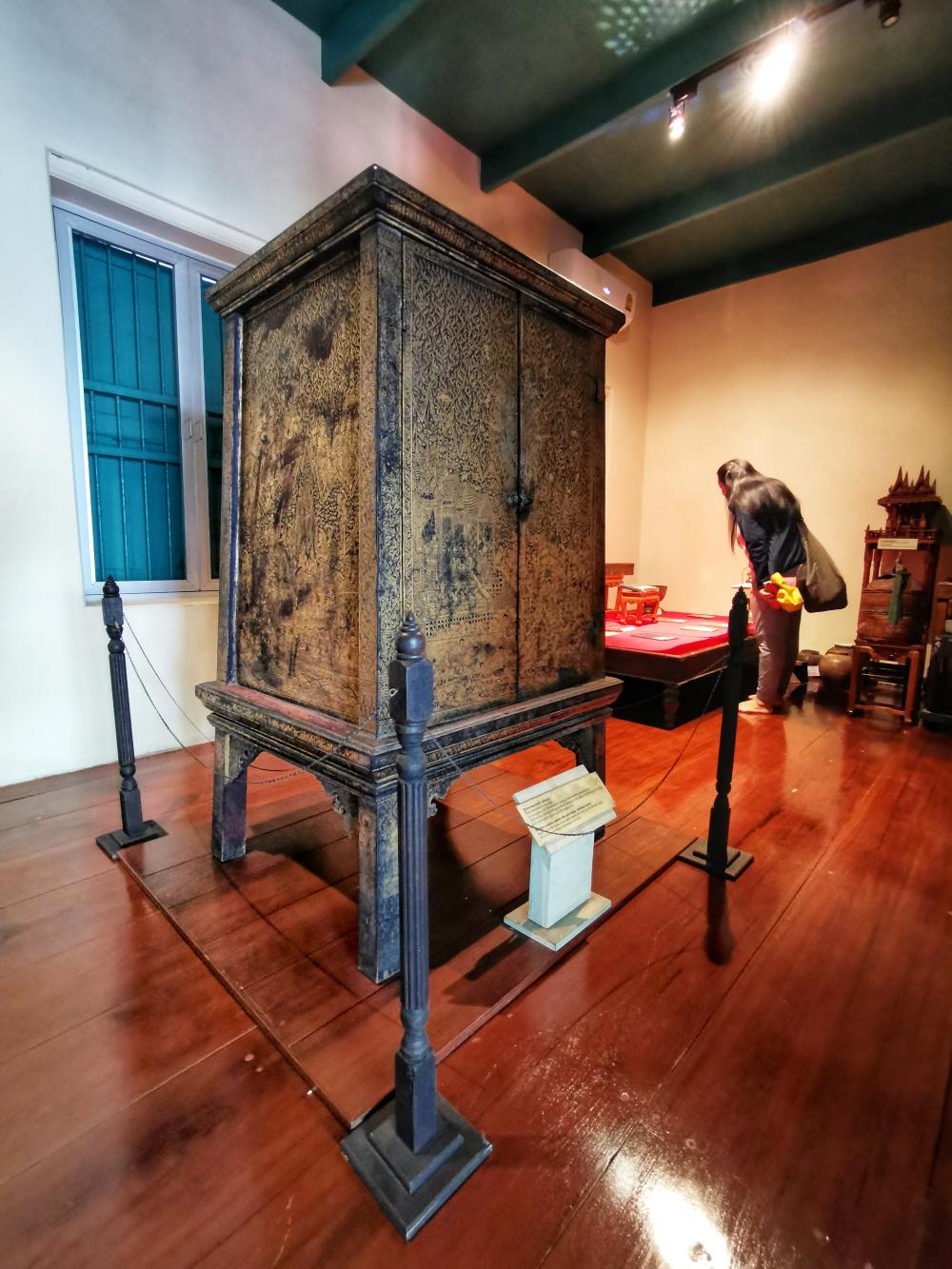
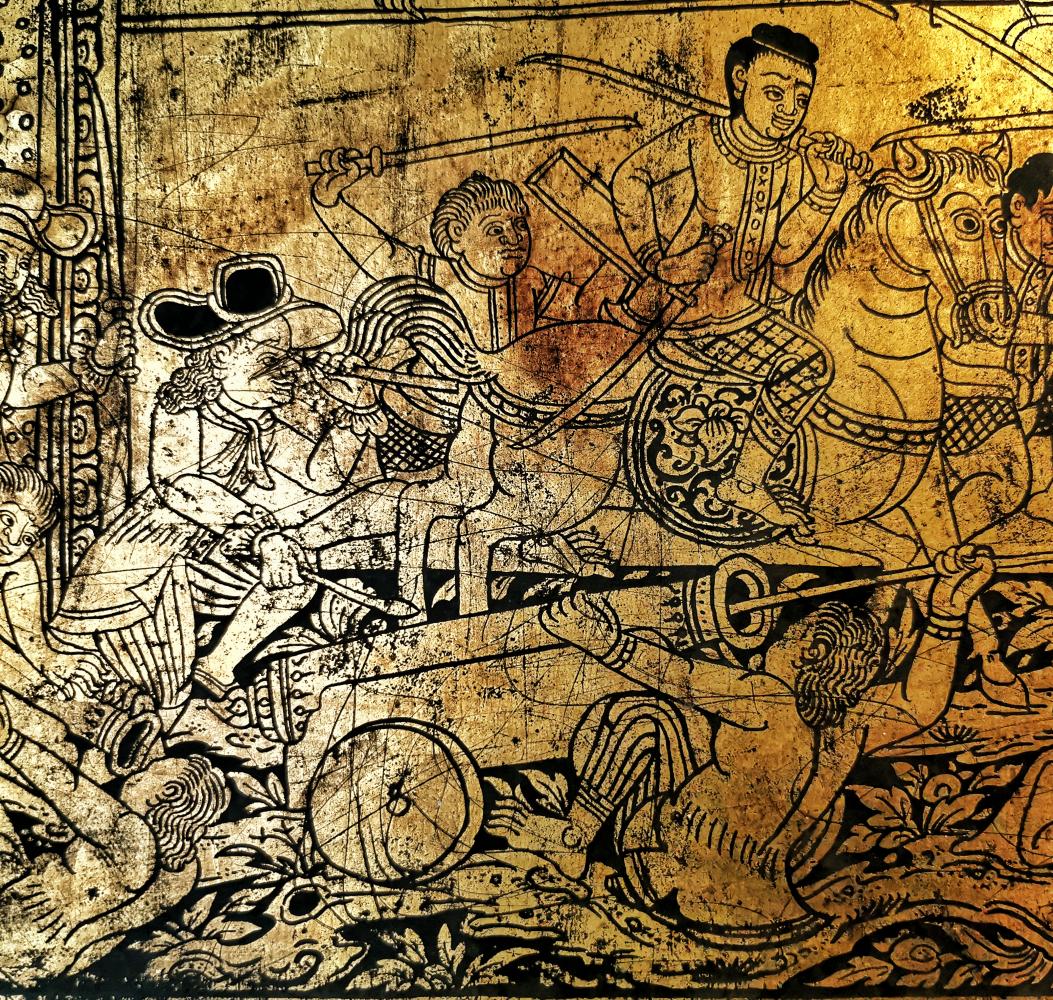
Wat Anongkharam, better known as Wat Anong, houses a majestic Buddha image from the Sukhothai period and a nice collection of Chinese stone sculptures that in those days were used as ballast for Siamese trade ships on the way back from China. However, one rare item you should not miss is the guild lacquered scripture cabinet from the days of the Ayutthaya Kingdom. Its elaborate design shows a war scene that depicts Westerners and Middle Easterners, proof of the existence of foreign mercenaries in the Siamese army. The cabinet is kept in a small but beautiful museum tucked in the northeastern corner of the temple. Also shown in the museum are made-to-order ceramics imported from China bearing trademarks of companies based in Siam.
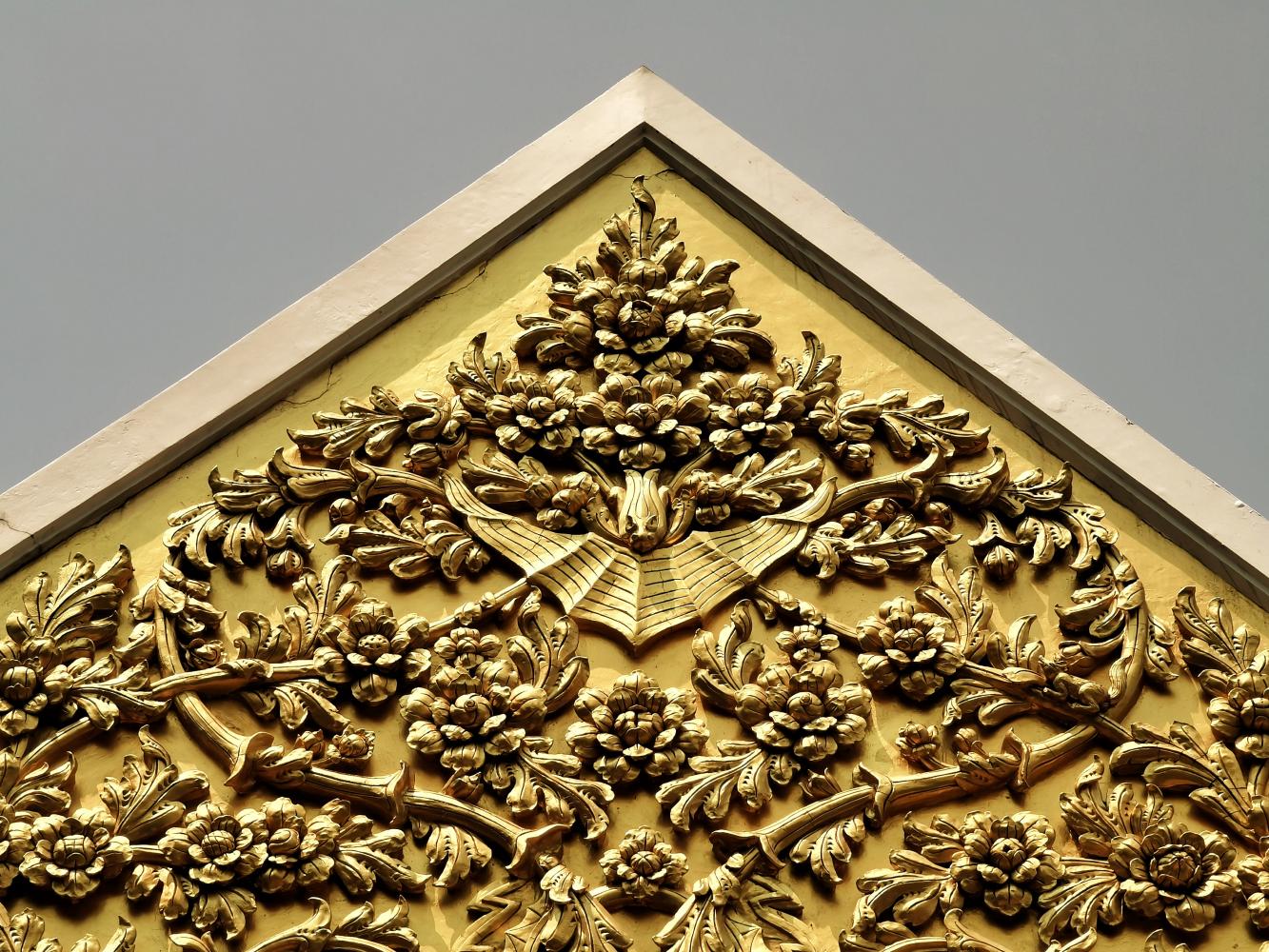
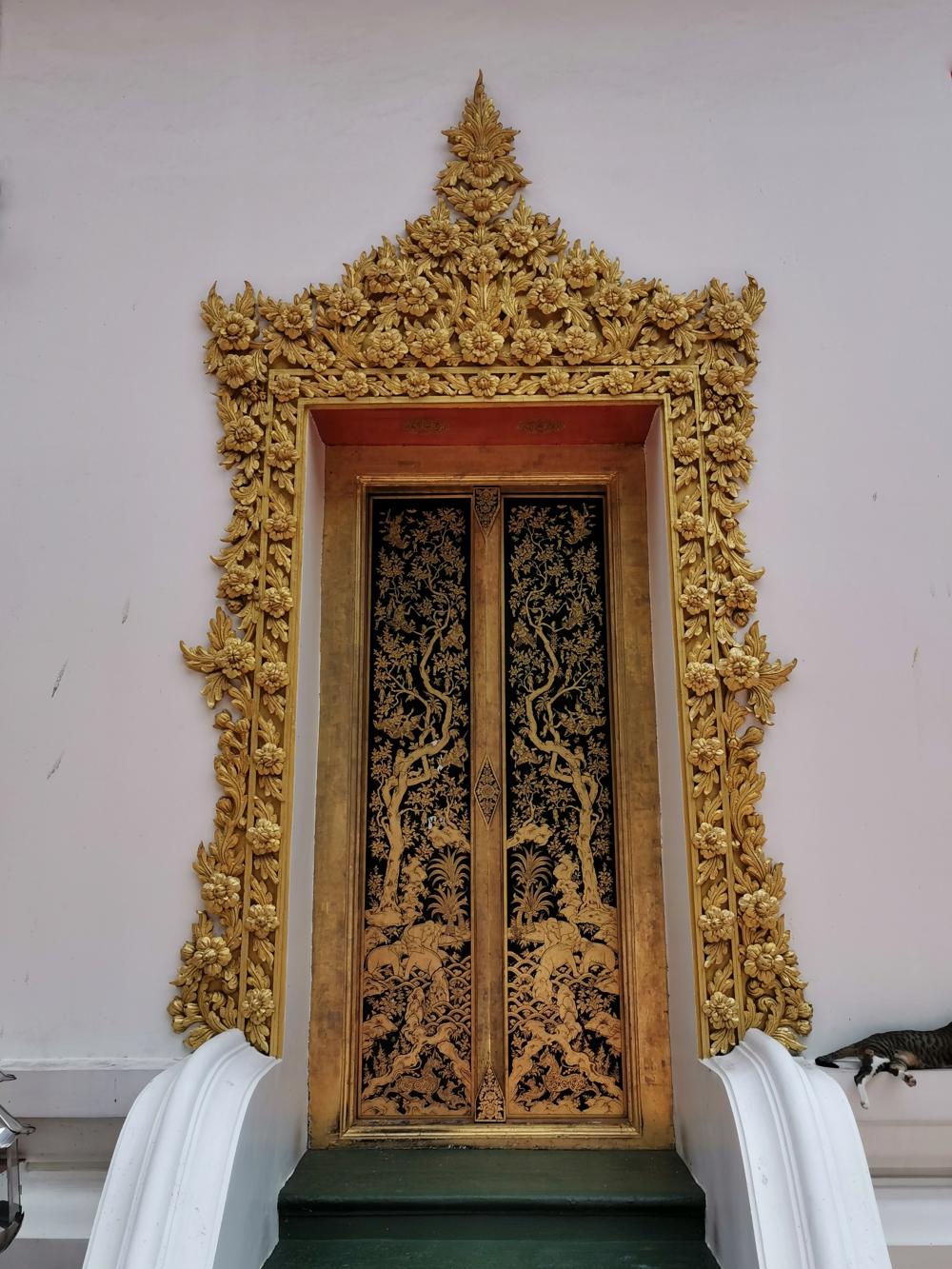
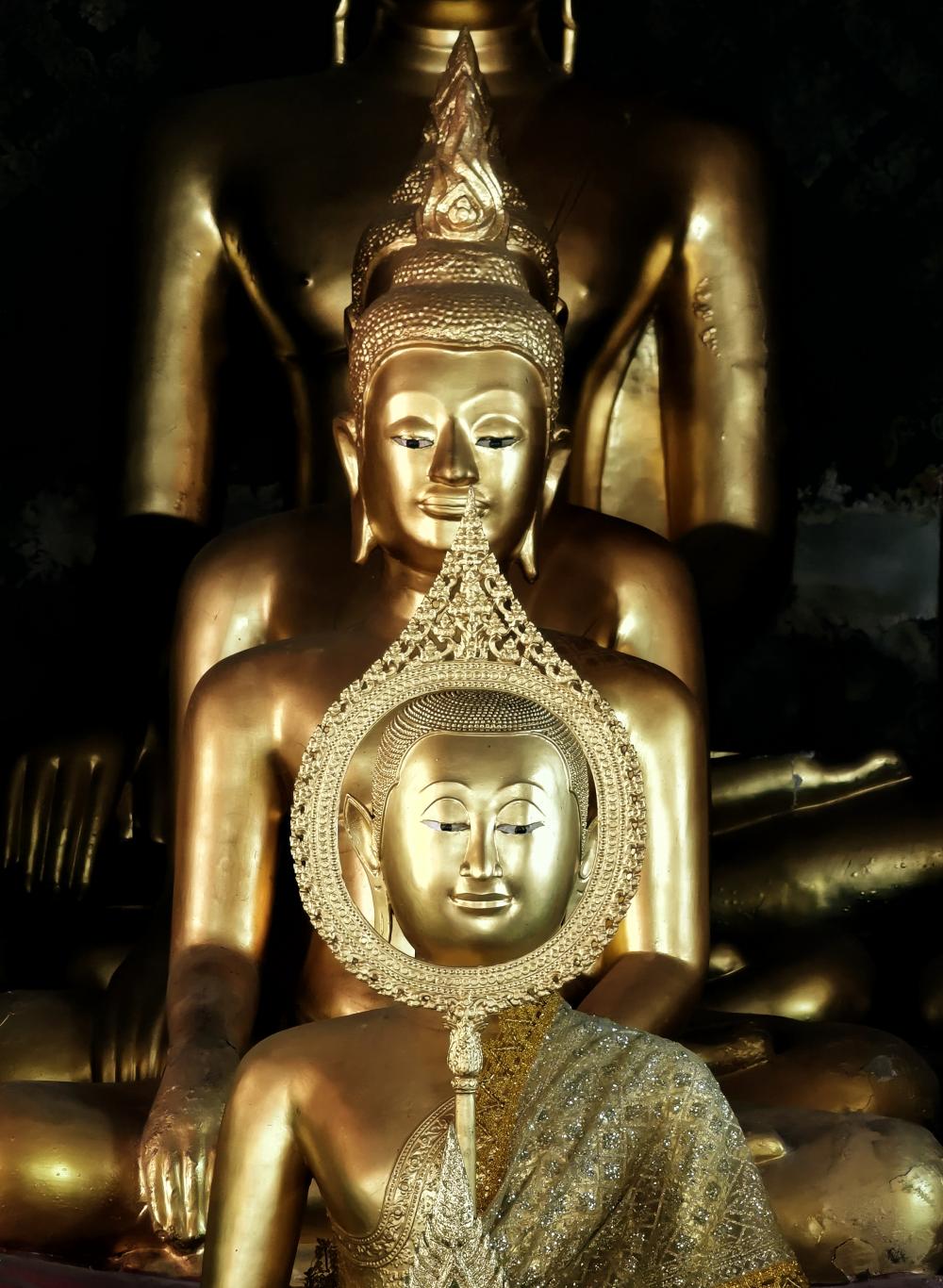
Like Wat Thong Nopphakhun, its sister temple, Wat Thong Thammachat dates back to the Ayutthaya period and was renovated during the early Rattanakosin (Bangkok) period. It houses several beautiful Buddha images both in the ordination hall and the adjacent minor hall called Wihan Luangpho Sip That. The first is normally closed but the latter is open all day long.
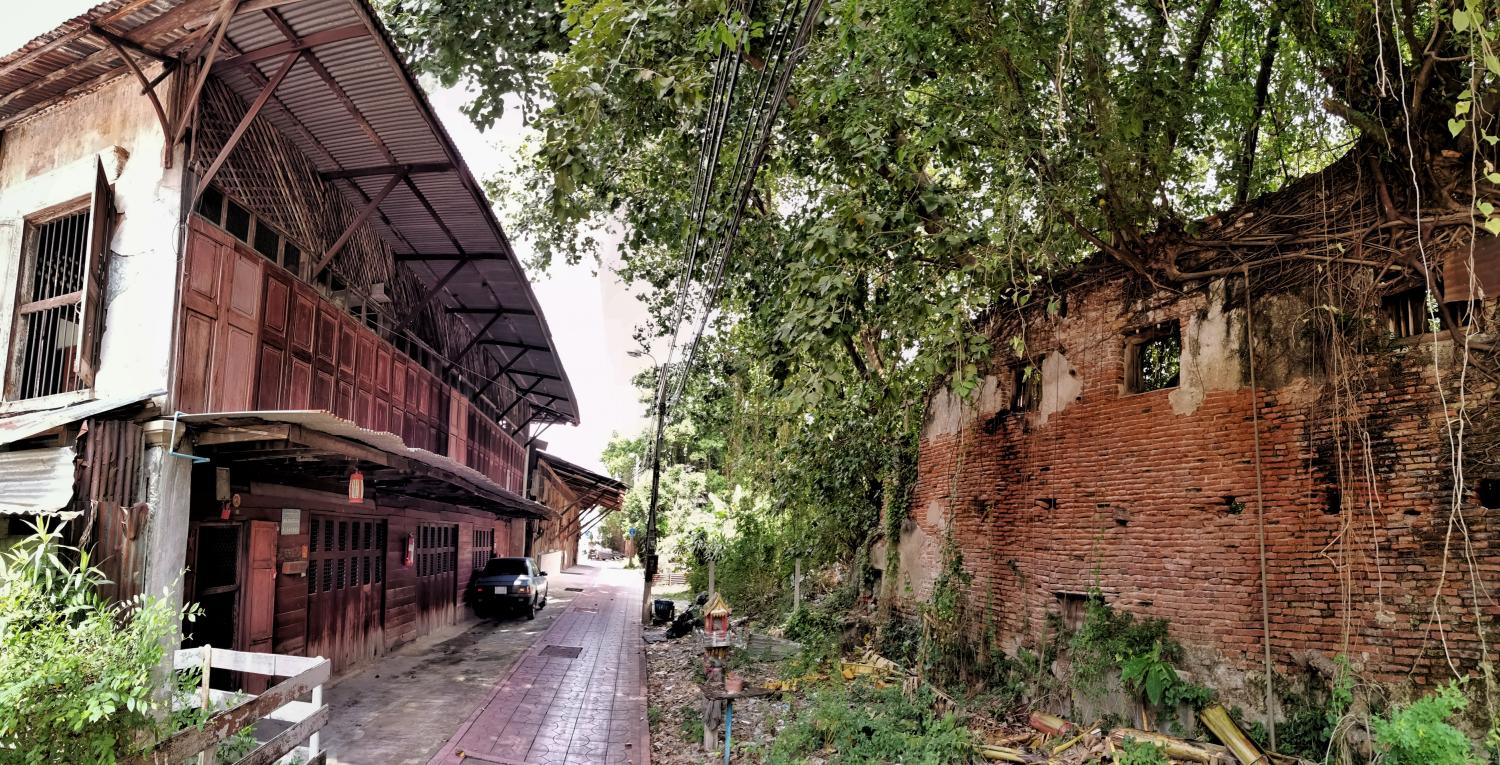


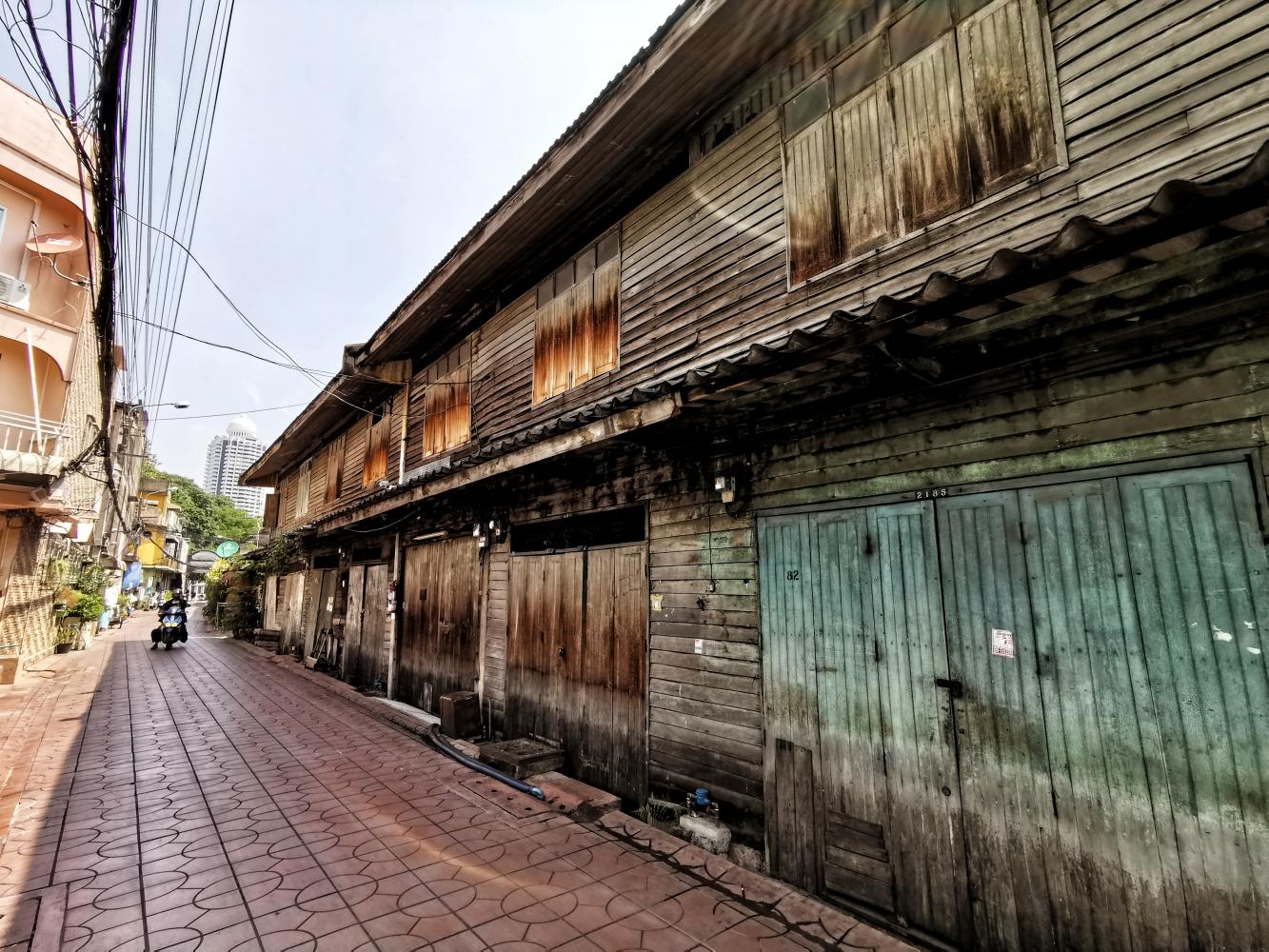
Exploring small alleys in this part of Klong San is fun. Be adventurous and you might find hidden gems no guidebook has ever mentioned. The area is teeming with decades- or even century-old architecture built for different purposes, from homes to warehouses. If you get to visit the area, take these photos with you and see if you can find all the places shown. Don't be shy to ask people for help, apart from directions you may also learn about interesting things only the locals know.
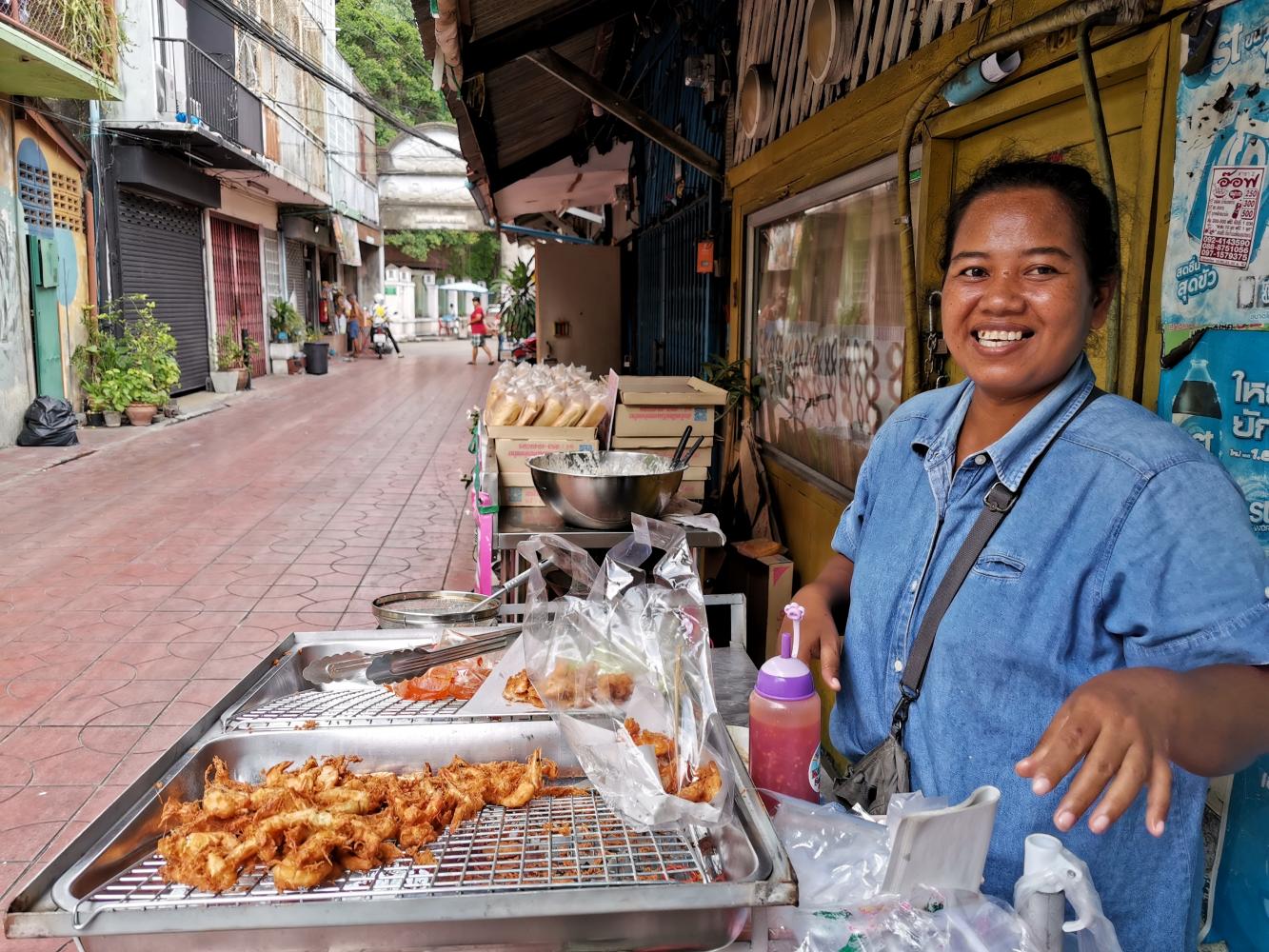
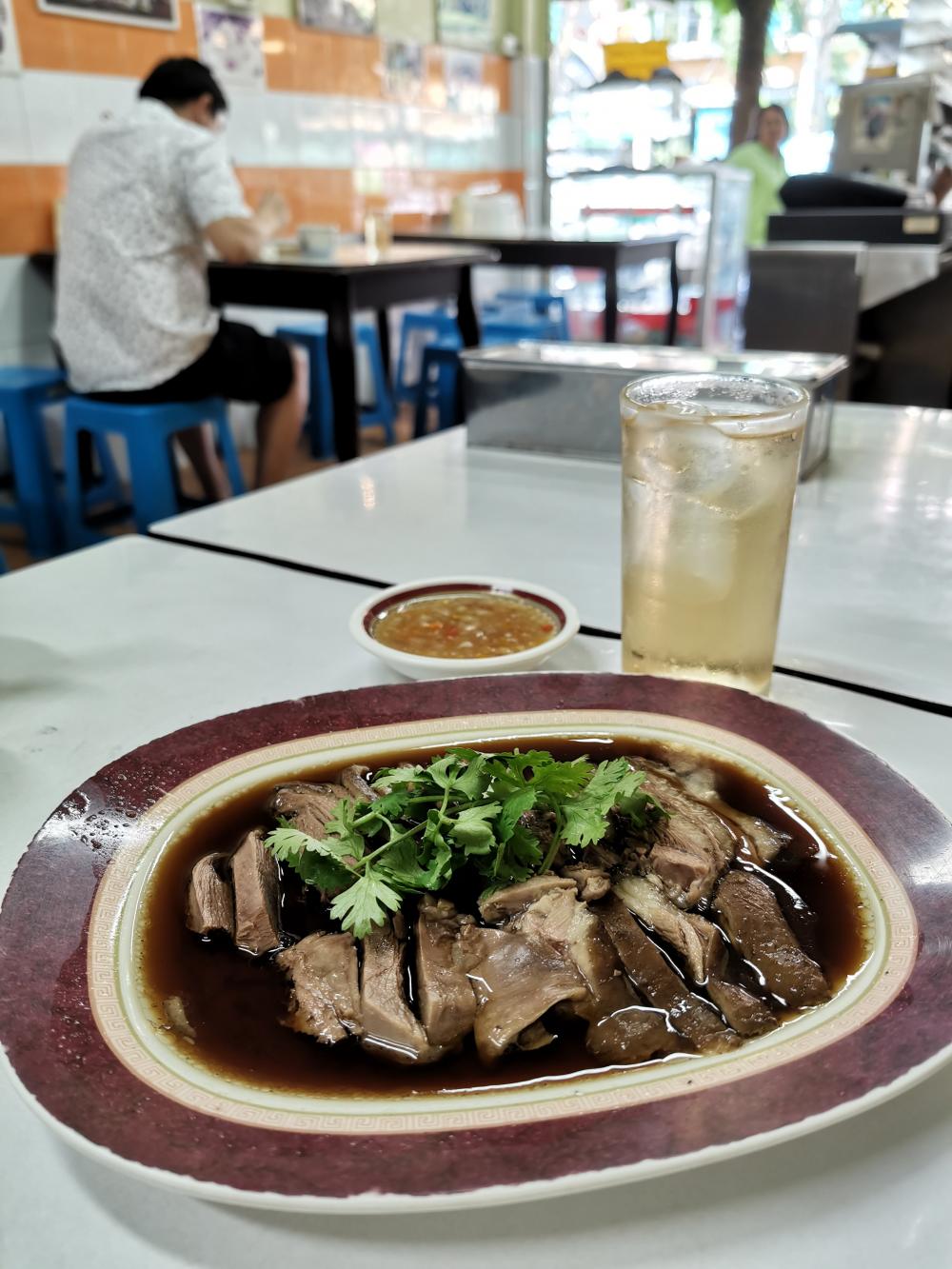
With numerous restaurants and street vendors, Tha Din Daeng is long known as a food haven in this part of Klong San. Goose phalo is a dish Tha Din Daeng is famous for. But in the maze of alleyways in surrounding areas there are also local shops offering delightful treats. The deep-fried shrimp this lady sells near the entrance of Princess Mother Memorial Park was the best I've ever had. She comes here only on Saturdays and Sundays. During weekdays, she sells at Silom's Lalai Sap market.
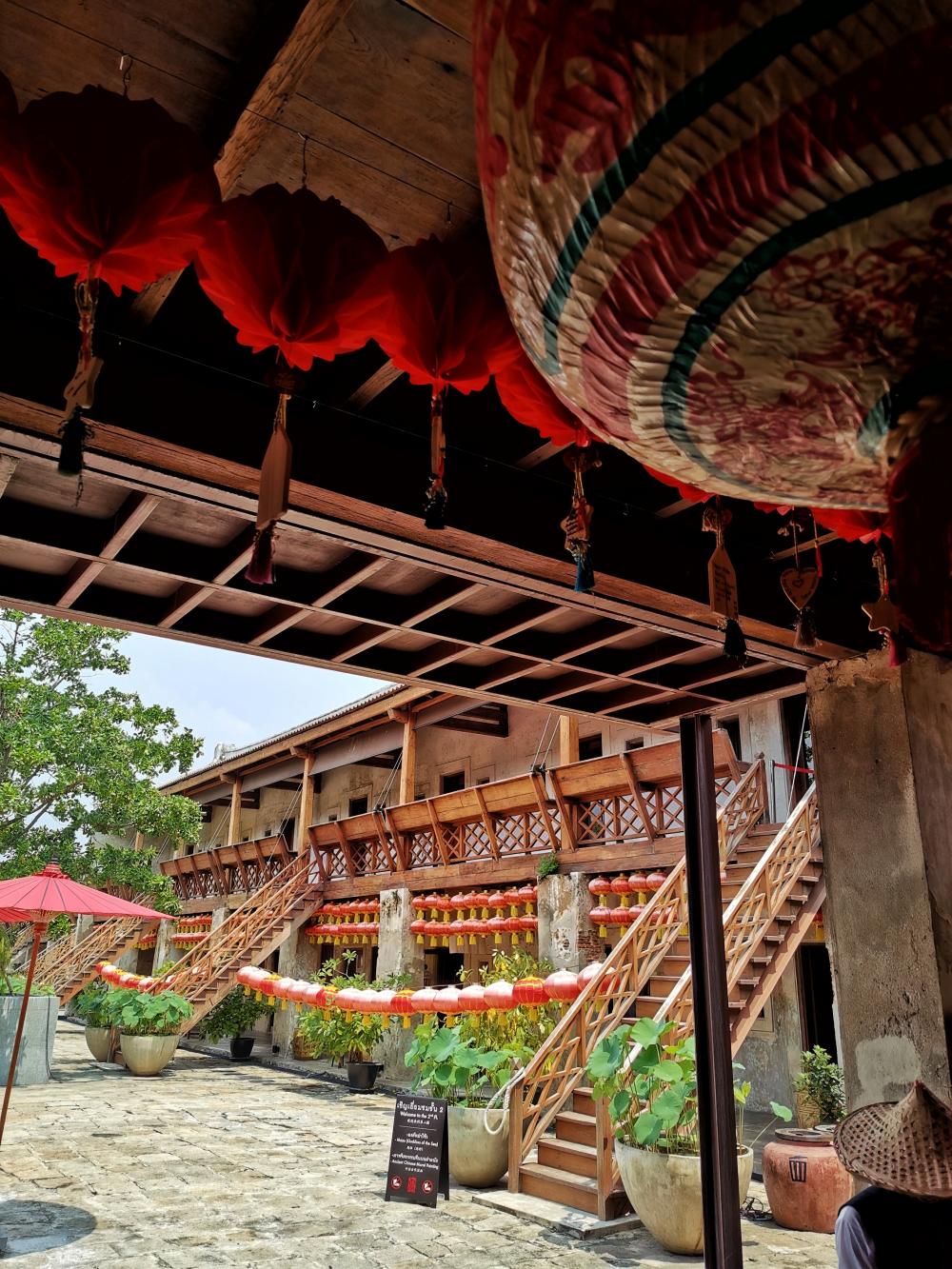
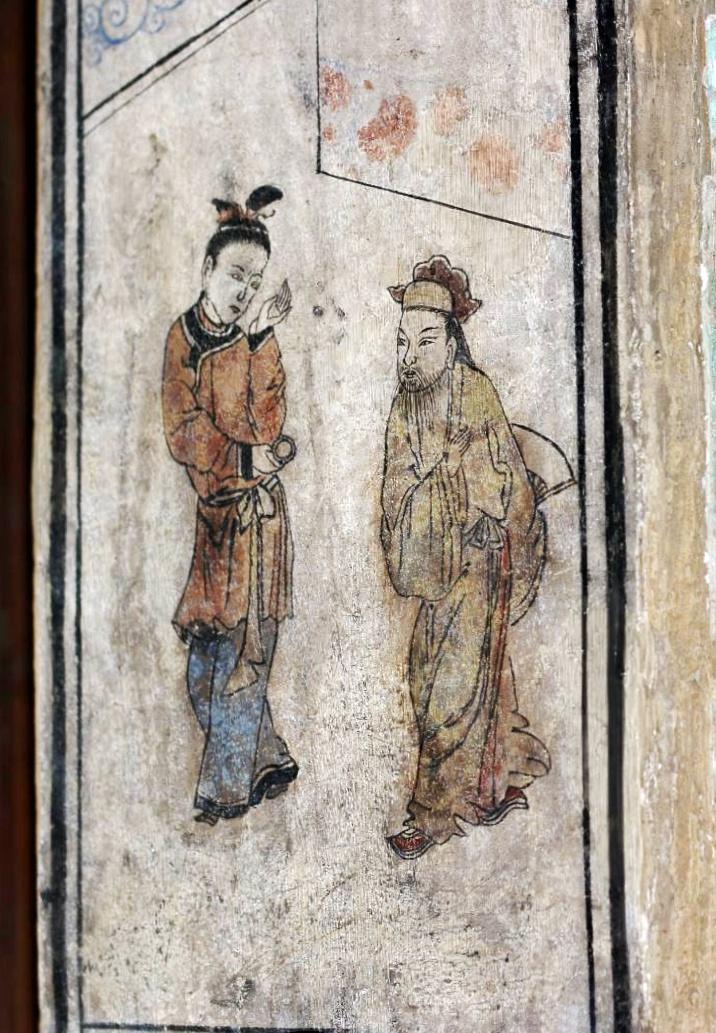
Converted from a former warehouse of the Wanglee family, Lhong 1919 is now a popular attraction for art lovers and tourists. The most precious paintings here are not those you find in the buildings' many shops but on their own walls. These old Chinese-style murals were hidden beneath layers of paint for decades. They were rediscovered during the recent renovation when the overlying paint was removed. Photos: Kajondej Thongmee
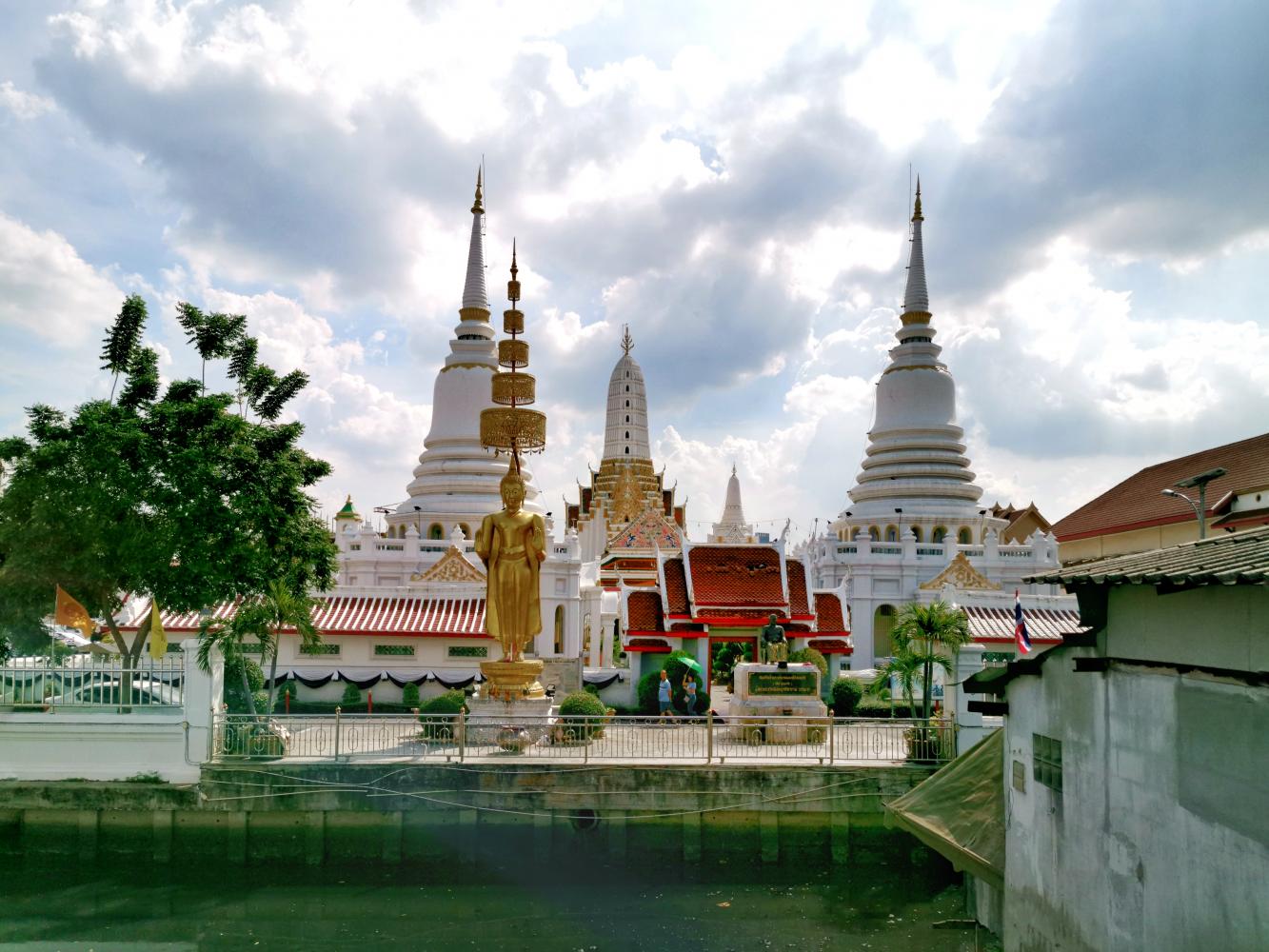
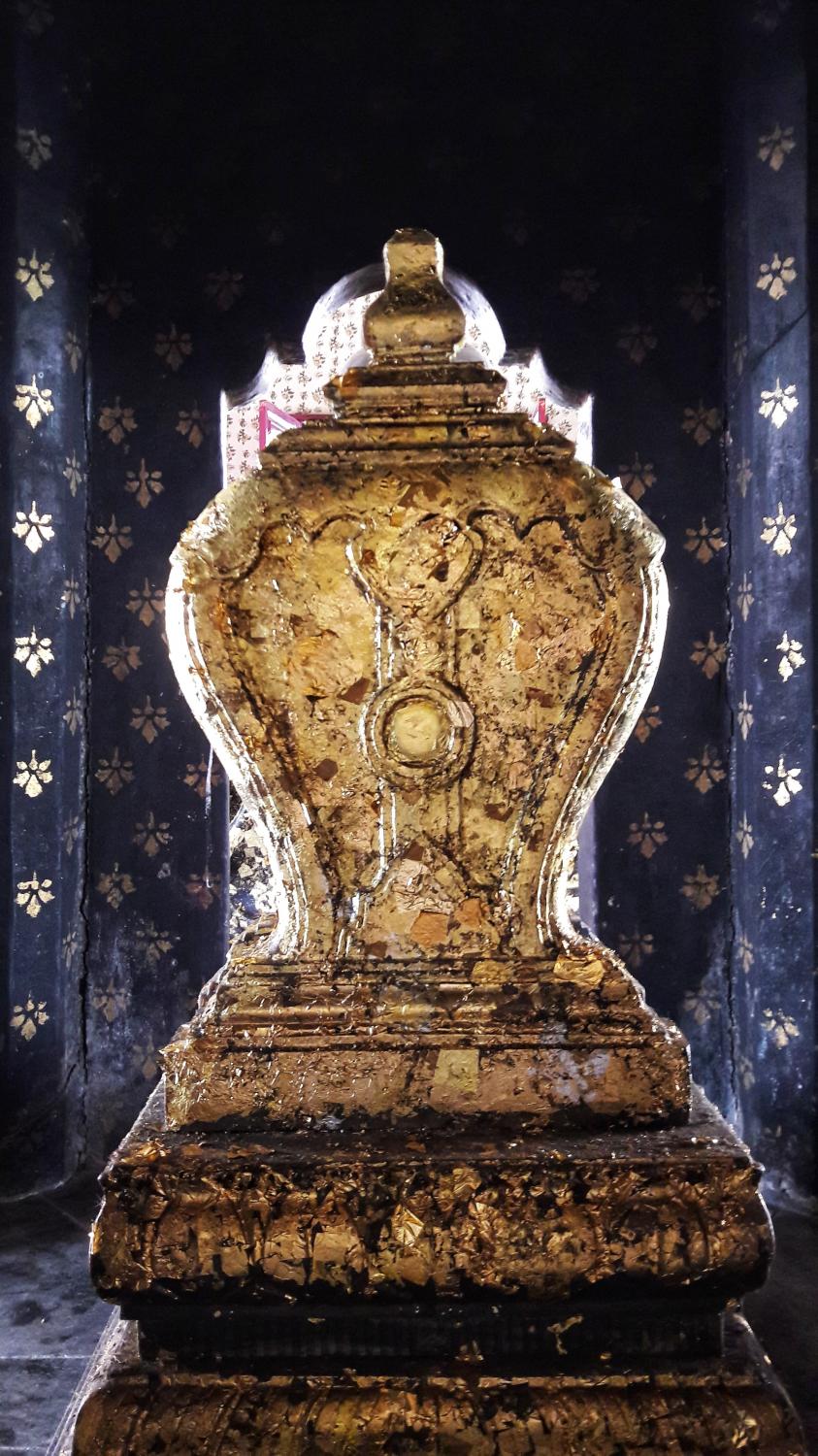
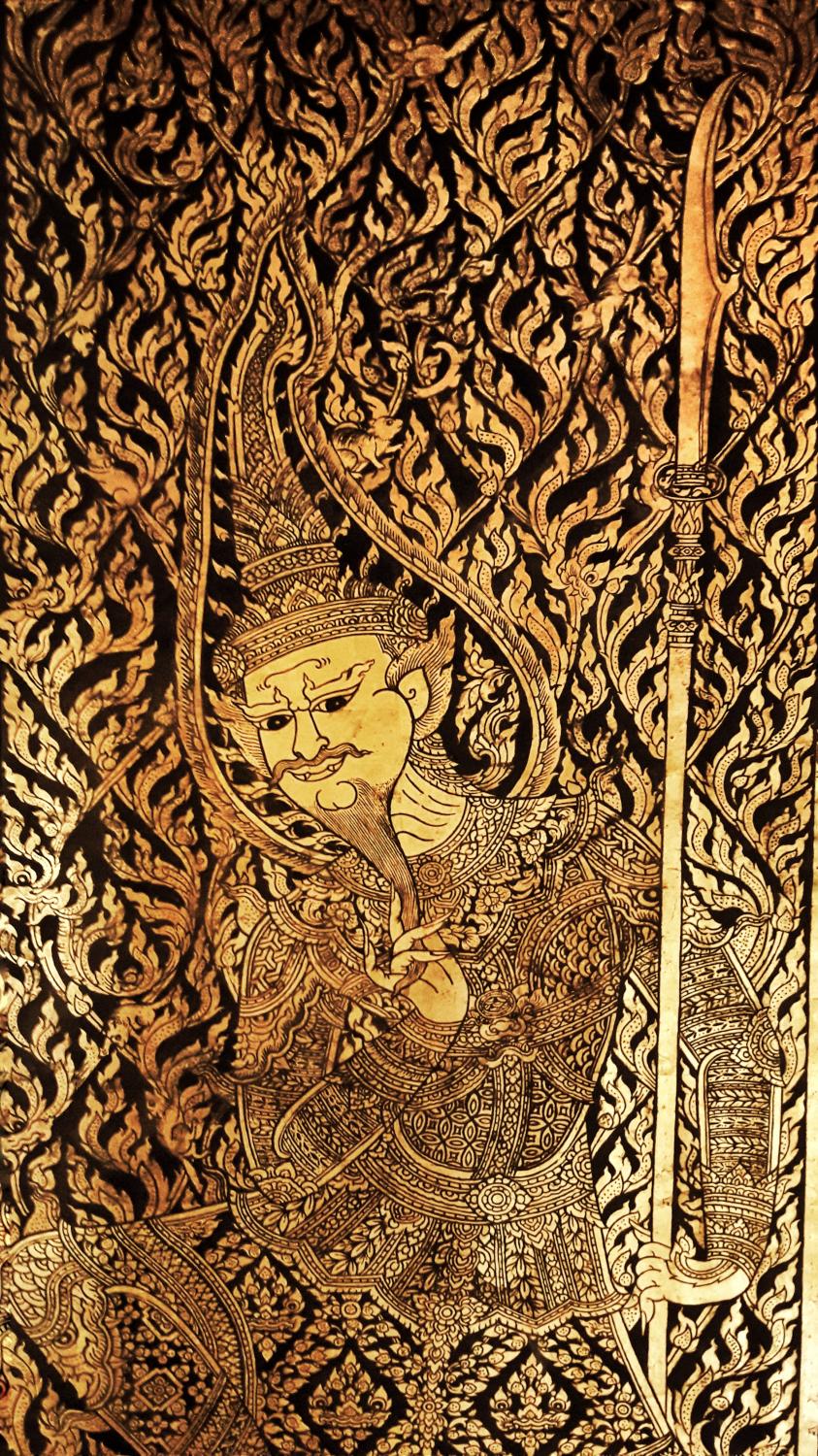
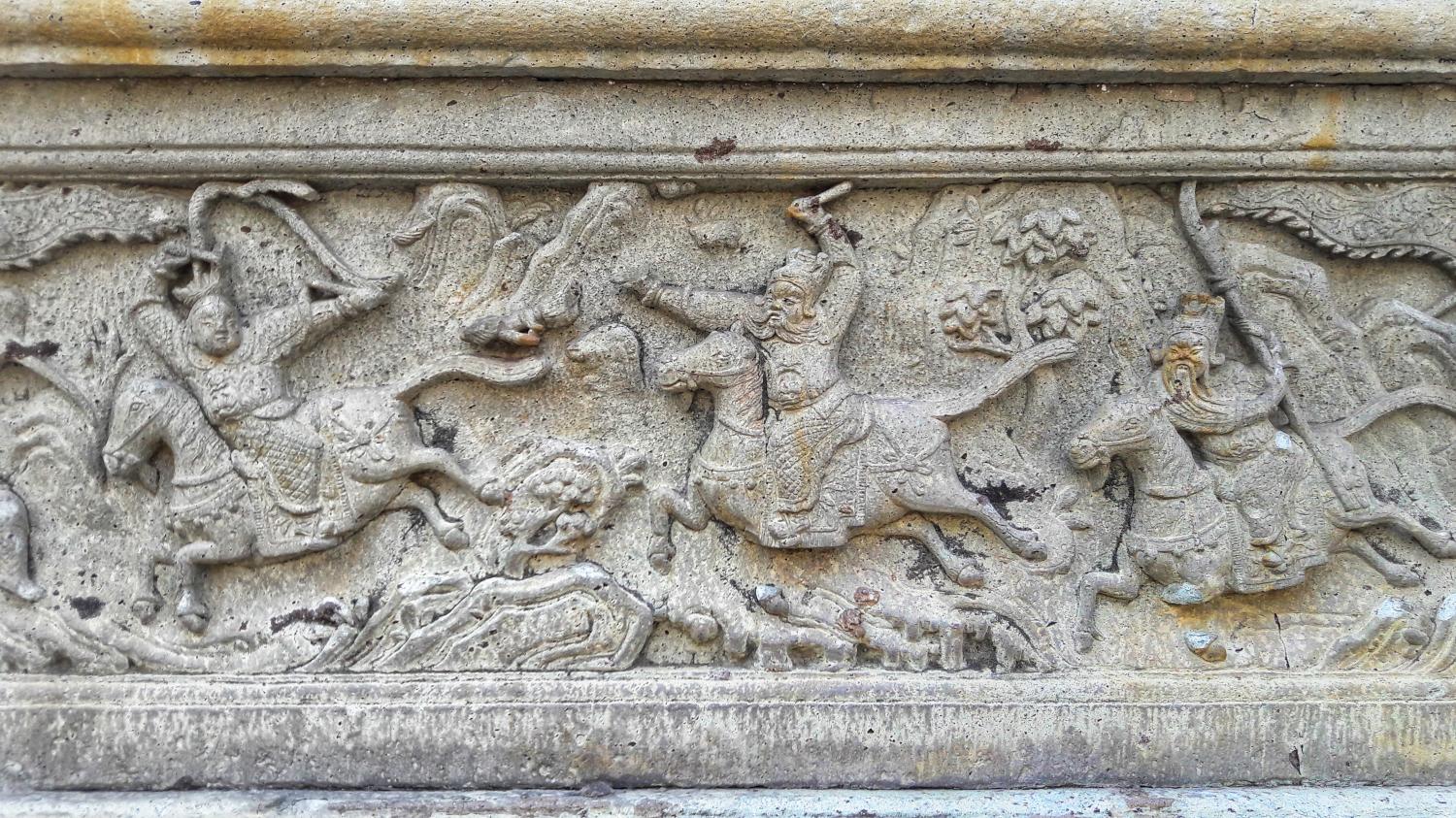
Better known as Wat Pichai, Wat Pichaya Yatikaram underwent a major renovation during the reign of King Rama III by one of his high-ranking officials from the Bunnag family, Tat Bunnag. The temple boasts towering pagodas of both prang style and bell shape. The architectural details of the temple's structures demonstrate a fascinating blend of Thai and Chinese art. This is no surprise since the nobleman oversaw the Kingdom's maritime trade with China.
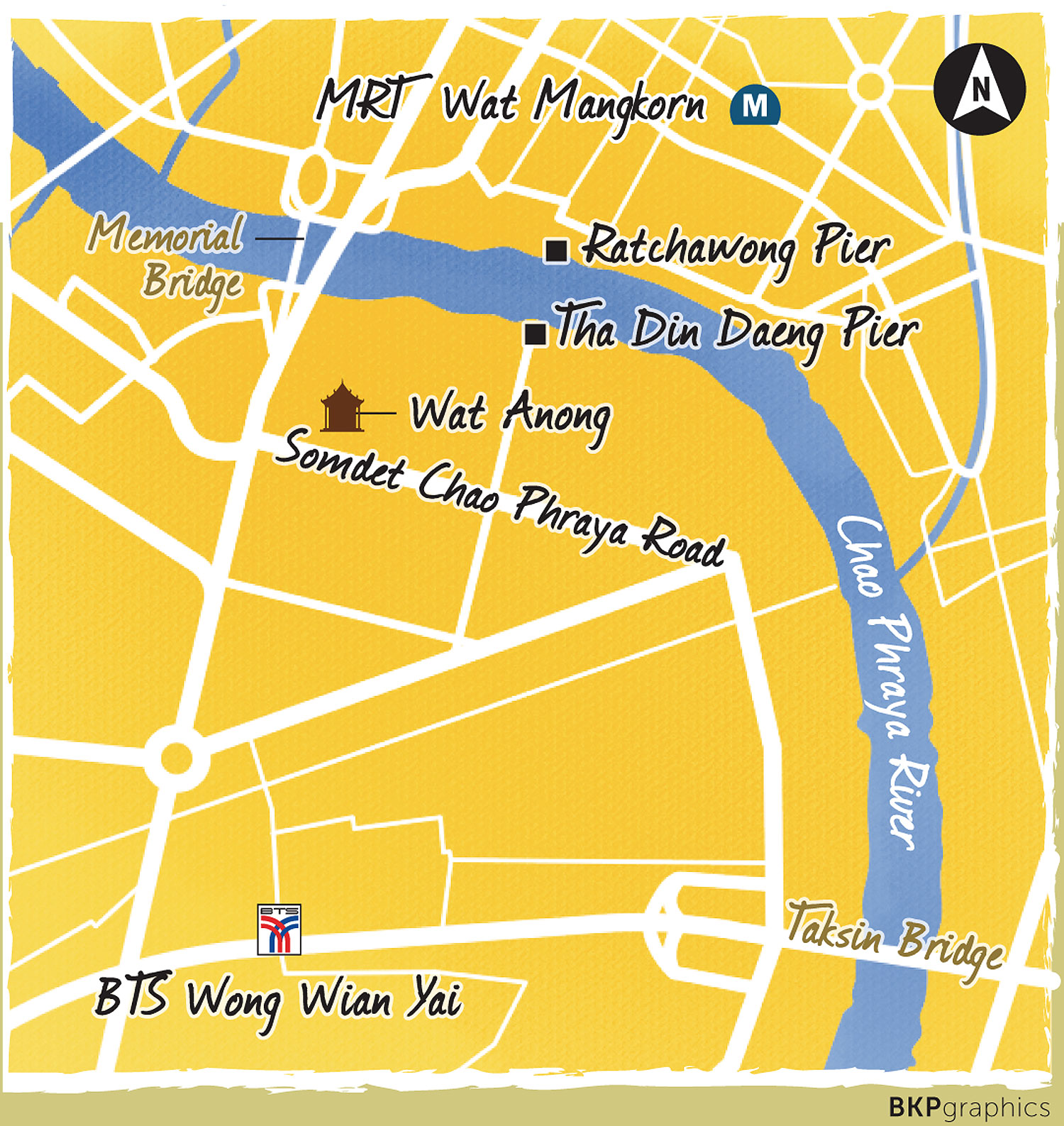
TRAVEL INFO
- There are many ways to get to this part of Bangkok on the west side of the Chao Phraya River. The nearest BTS station is Wong Wian Yai. From there, if you don't want to walk, you can hail any kind of taxis.
- In case you prefer the MRT, you can get off at Wat Mangkorn station and find your way through the Chinatown to Rat Chawong pier (a stop of the Chao Phraya Express boats) where you can take a ferry across the river to Tha Din Daeng.
- If you drive, you can either find a spot to park on Tha Din Daeng Road or in the parking lots of Buddhist temples in the area.
